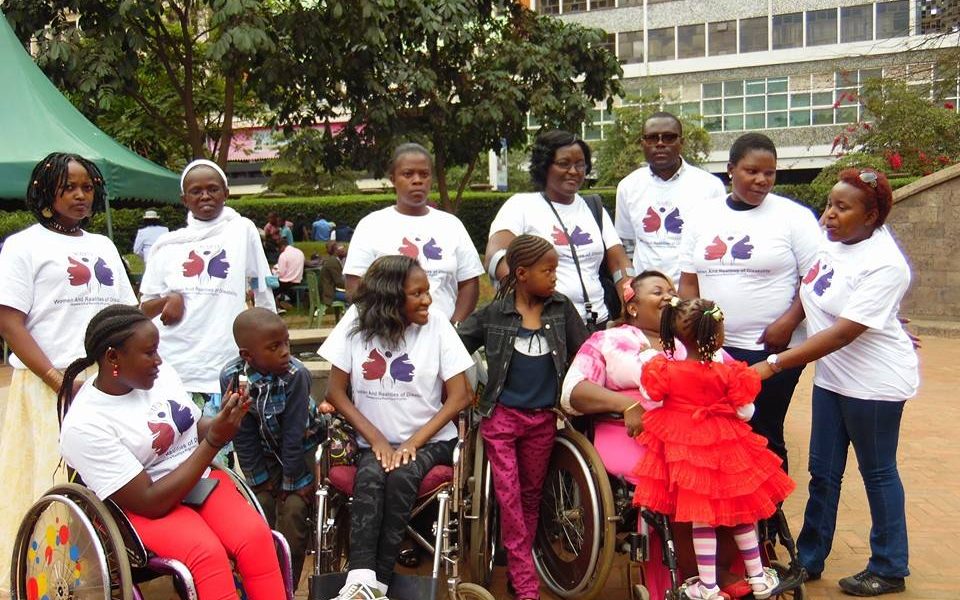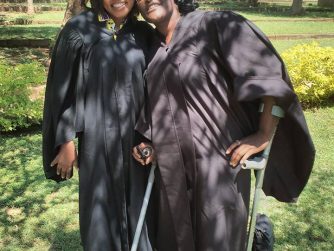The World Report on Disability (World Bank and World Health Organization) estimates there are some 1 billion people with some type of disability in the world, and women outnumber men. In some low- and medium-income countries, women constitute up to three quarters of all persons with disabilities. Between 65% and 70% of these women live in rural areas.
Discrimination faced by women, young women, and girls with disabilities and their exposure to sexual gender based violence and poverty have been recognized in line with the
Convention on Elimination of Discrimination against Women (CEDAW) and the Convention on the Rights of Persons with Disabilities (CRPD).
Some facts promote specific and unique kinds of discrimination and must be addressed differently. Being an older woman or a girl with disabilities, having a mental disability, being a foreigner, living in a rural setting, or being unemployed, are some of the factors that interact simultaneously and deserve to be addressed differently.
Gender and Disability Intersections:
The intersection between gender and disability, or age and disability, is quite a recent concept. For long time, the feminist movement, preferred to address groups or subgroups of minorities, tackling their issues in a grouped way under the so-called vulnerable groups or in situation of vulnerability or exclusion. In the same sense, it is also true that the disability movement has treated the group of persons with disabilities as a homogeneous group, failing to address specific discrimination that girls and women with disabilities are subject to.
Although some progress has been achieved, structural understanding of intersection between disability and gender (and age) – as well as of the discrimination that drifts – is lightly addressed and even less acknowledged. In that sense, budgetary provision, political commitments and implementation measures, such regulatory and legal frameworks, lack to adequately address the needs and assets of women with disabilities, perpetrating structural inequalities and discrimination.
Geography, income, age, race, ethnicity, disability, sexual orientation, and cultural norms, among other factors, remain powerful determinants of a woman’s (and girls) chance at equal rights and opportunities. Discrimination against women with disabilities is not only worse than the ones that affect women without disabilities, but also worse than that of their male peers; this is especially so in rural areas, where matriarchal and primary economic systems, with fewer services and opportunities for this group than in urban environments. However, public policies and studies carried out in the framework of public policies do not take into account such flagrant discrimination.
Among other reasons, it is due because they do not include indicators that bring to light the gender and disability perspectives together. For instance, the lack of access for women and girls with disabilities to gender violence programmes, which often do not address disability related perspectives to ensure equal access to the services. This includes a lack of accessible information, information in languages and means of communication, inaccessible emergency shelter services, among others factors.
A dual approach is needed to overcome this gap in understanding and acknowledge of these specific issues intrinsically linked to gender (and age) and disabilities, which hinges on an awareness of and participation in society. The structuring of ‘social norms’ must be followed by policies and legal harmonization disability- and gender-focused and based on the CRPD. Furthermore, economic opportunities should include gender perspective in human capital, time use, access to assets, productive inputs and markets, as well as differences in legal and regulatory frameworks and social norms.
In addition, indicators on gender (or age) and disabilities should be adopted in order to measure real living conditions and support needed for women and girls with disabilities.
By Mildred Omino
Women and Realities of Disability Society








Very interesting subject, regards for putting up.Blog range
I don’t think the title of your article matches the content lol. Just kidding, mainly because I had some doubts after reading the article.
Your article helped me a lot, is there any more related content? Thanks! https://accounts.binance.com/bn/register?ref=UM6SMJM3
Can you be more specific about the content of your article? After reading it, I still have some doubts. Hope you can help me.
Your article helped me a lot, is there any more related content? Thanks!
Thank you for your sharing. I am worried that I lack creative ideas. It is your article that makes me full of hope. Thank you. But, I have a question, can you help me?
Your article helped me a lot, is there any more related content? Thanks!
Your point of view caught my eye and was very interesting. Thanks. I have a question for you.
Your point of view caught my eye and was very interesting. Thanks. I have a question for you.
Can you be more specific about the content of your article? After reading it, I still have some doubts. Hope you can help me.
Thanks for sharing. I read many of your blog posts, cool, your blog is very good.
Your article helped me a lot, is there any more related content? Thanks!
Thank you for your sharing. I am worried that I lack creative ideas. It is your article that makes me full of hope. Thank you. But, I have a question, can you help me?
Thank you for your sharing. I am worried that I lack creative ideas. It is your article that makes me full of hope. Thank you. But, I have a question, can you help me?
Your article helped me a lot, is there any more related content? Thanks!
Thank you for your sharing. I am worried that I lack creative ideas. It is your article that makes me full of hope. Thank you. But, I have a question, can you help me? https://www.binance.com/zh-CN/join?ref=VDVEQ78S
Thank you for your sharing. I am worried that I lack creative ideas. It is your article that makes me full of hope. Thank you. But, I have a question, can you help me?
I don’t think the title of your article matches the content lol. Just kidding, mainly because I had some doubts after reading the article. registrera dig f”or binance
Excellent post. I was checking constantly this
weblog and I’m inspired! Extremely helpful
information specially the ultimate part 🙂 I take care of such info much.
I used to be seeking this particular information for a very lengthy time.
Thank you and good luck.
I’m really inspired along with your writing skills as neatly
as with the layout on your blog. Is this a paid subject matter or did you customize
it your self? Either way stay up the excellent high quality writing, it’s uncommon to peer a nice blog like this one nowadays..
hi!,I like your writing very a lot! proportion we communicate more approximately your article on AOL?
I need a specialist on this area to unravel my
problem. Maybe that is you! Having a look forward to look you.
Thank you for any other informative blog. Where else could I am getting that type
of information written in such a perfect means? I have a
mission that I am just now working on, and I’ve been on the look out for such info.
I loved as much as you will receive carried out right here.
The sketch is tasteful, your authored material stylish.
nonetheless, you command get got an shakiness over that you
wish be delivering the following. unwell unquestionably
come more formerly again as exactly the same nearly a lot often inside case
you shield this hike.
Right here is the perfect website for anybody who wants to find out about this topic.
You understand so much its almost tough to argue with you (not that I
really will need to…HaHa). You definitely put a fresh spin on a subject that’s been discussed for a long time.
Wonderful stuff, just wonderful!
Hi there mates, how is everything, and what you would
like to say about this piece of writing, in my view its actually
awesome designed for me.
Thanks for sharing. I read many of your blog posts, cool, your blog is very good.
Heya i am for the first time here. I came across
this board and I find It really useful & it helped me out much.
I hope to give something back and help others like you helped me.
Thank you for your sharing. I am worried that I lack creative ideas. It is your article that makes me full of hope. Thank you. But, I have a question, can you help me?
continuously i used to read smaller articles which as well clear
their motive, and that is also happening with this post which I
am reading at this place.
Feel free to surf to my blog … website
Can you be more specific about the content of your article? After reading it, I still have some doubts. Hope you can help me.
Reading your article helped me a lot and I agree with you. But I still have some doubts, can you clarify for me? I’ll keep an eye out for your answers.
Thank you for your sharing. I am worried that I lack creative ideas. It is your article that makes me full of hope. Thank you. But, I have a question, can you help me?
Thanks for sharing. I read many of your blog posts, cool, your blog is very good.
Thank you for your sharing. I am worried that I lack creative ideas. It is your article that makes me full of hope. Thank you. But, I have a question, can you help me?
Thanks for sharing. I read many of your blog posts, cool, your blog is very good.
Thanks for sharing. I read many of your blog posts, cool, your blog is very good.
Alright, lottery lovers, checked out lottery92. Seems like your standard lottery site. Feeling lucky? Give it a go and see if Lady Luck is on your side! lottery92